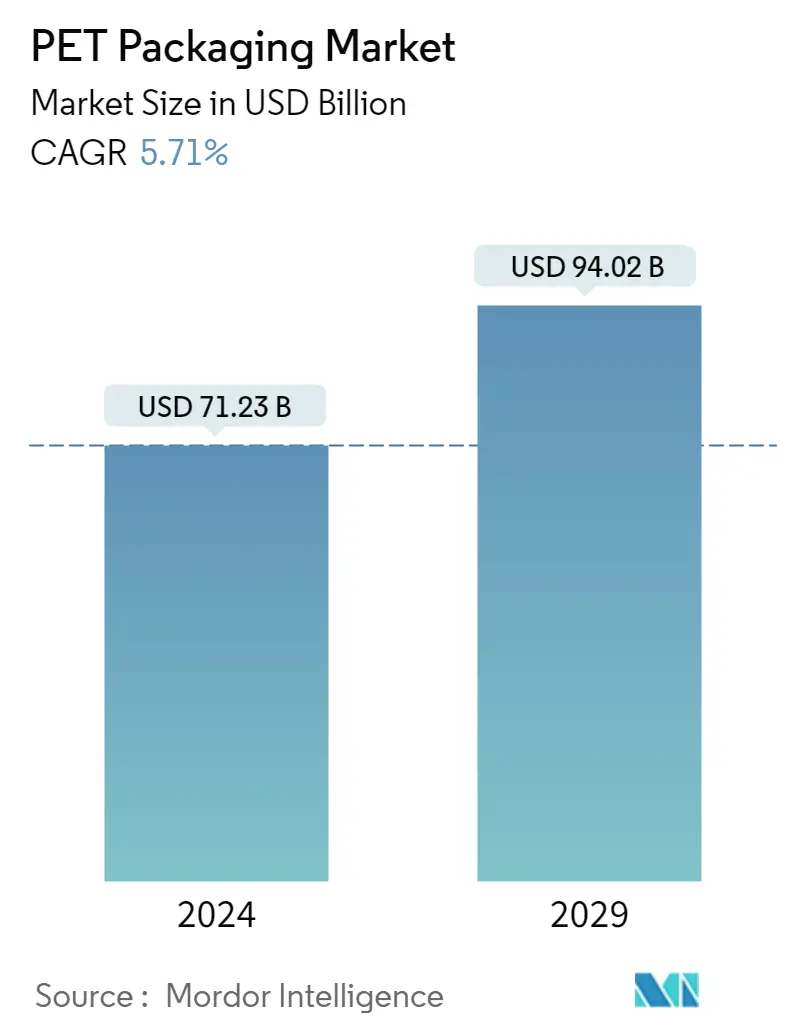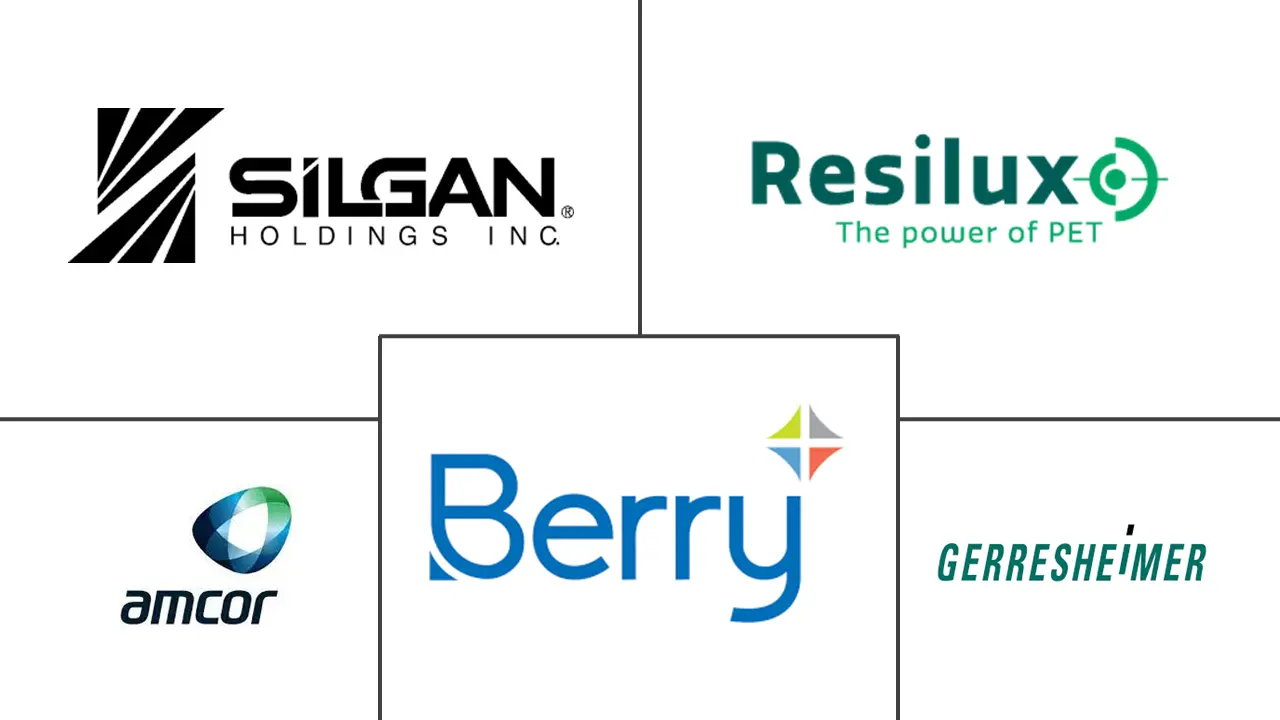Market Size of PET Packaging Industry

| Study Period | 2019 - 2029 |
| Market Size (2024) | USD 71.23 Billion |
| Market Size (2029) | USD 94.02 Billion |
| CAGR (2024 - 2029) | 5.71 % |
| Fastest Growing Market | Asia-Pacific |
| Largest Market | North America |
Major Players
*Disclaimer: Major Players sorted in no particular order |
Need a report that reflects how COVID-19 has impacted this market and its growth?
Pet Packaging Market Analysis
The PET Packaging Market size is estimated at USD 71.23 billion in 2024, and is expected to reach USD 94.02 billion by 2029, growing at a CAGR of 5.71% during the forecast period (2024-2029).
The increasing demand for environment-friendly packaging and the outstanding properties of PET are expected to drive market growth over the forecast period.
- The packaging sector keeps making significant strides in environment-friendly technologies to satisfy customer demand for a more sustainable society. Customers increasingly know that high-performance packaging may lengthen a product's shelf life. It has increased the need for environment-friendly end-of-life packaging options, particularly PET (polyethylene terephthalate) packaging solutions.
- PET can result in weight reductions of up to 90% compared to glass, making shipping more affordable. As they provide reusable packaging for beverages like mineral water, PET plastic bottles have increasingly replaced bulky, brittle glass bottles in recent years.
- Several advancements and trends in how companies and products use PET indicate the attention on PET and the market's growth. PET has many uses and is easily blown into bottles or shaped into sheets thanks to its clarity and built-in CO2 barriers. PET characteristics can be enhanced with colorants, UV blockers, oxygen barriers/scavengers, and other additives to create bottles that meet a brand's requirements.
- Additionally, PET containers are often used for packaging goods, including tennis balls, juice, salad dressing, cooking oil, peanut butter, liquid hand soap, and soda. PET is primarily used to make single-serving and two-liter bottles of carbonated soft drinks and water distributed throughout the nation, including the United States. Containers for take-home prepared meals that may be warmed in the oven or microwave are made of exceptional grades of PET.
- Most water and soft drink containers are constructed of highly recyclable polyethylene terephthalate (PET). However, attempts to collect and recycle the bottles to prevent them from damaging the oceans are falling behind as their use increases globally. For instance, if a PET bottle had 40%-60% recycled content, its emissions would be decreased by 32%-48% compared to one made from virgin material, according to a study examining the effects of single-use and reusable bottles for carbonated soft drinks.
- The COVID-19 pandemic provided significant relief to single-use packaging vendors. Although many countries were slowly banning these packaging and promoting reusable packaging, the outbreak changed consumer and government behavior. Due to the COVID-19 pandemic, the demand for nutritional drinks and healthy food increased exponentially. Most of these products are packaged with single-use plastic, such as PET.
